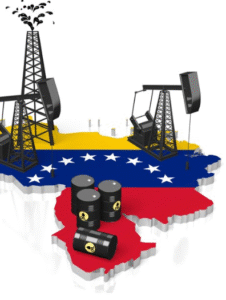$XOM $SLB $CL_F
#Trump #Tariffs #Energy #Oil #Gas #Manufacturing #Trade #Economy #Commodities #Inflation #USStocks #Markets
The Biden administration has been aiming to bolster domestic manufacturing, but the latest round of tariffs announced by former President Donald Trump threatens to undermine this effort. By imposing steep tariffs on various imported goods, including energy-related equipment, the costs of key materials are expected to rise, which could have long-term repercussions for U.S. energy production. Many industry experts warn that these tariffs will lead to supply chain disruptions and cost inflation, ultimately affecting energy firms’ ability to remain competitive in the global market. Furthermore, increased costs for pipeline materials, drilling equipment, and renewable energy components could deter investment in critical energy infrastructure. This could hinder the country’s ability to expand its domestic energy production, leading to both higher consumer prices and reduced energy security.
Major oil producers, such as ExxonMobil ($XOM) and Schlumberger ($SLB), along with commodities futures tied to crude oil ($CL_F), may experience near-term volatility as traders assess the broader implications of these tariffs. Crude oil prices could rise due to costlier drilling equipment and operational expenses, potentially extending inflationary pressures throughout the energy sector. Meanwhile, companies reliant on imports for energy infrastructure, including those operating in solar and wind energy, could see project costs balloon. With the Federal Reserve closely monitoring inflation trends, these new tariffs could add greater uncertainty to the central bank’s decision-making process, potentially influencing interest rate policies and affecting broader financial markets.
The tariffs also pose a challenge for U.S. manufacturers that rely on imported energy components to produce goods profitably. The administration’s push for clean energy infrastructure, such as battery storage and electric vehicle production, could suffer from higher input costs and strained supply chains. This situation might benefit foreign competitors that can more easily access affordable materials outside tariff-affected U.S. markets. Increased costs in the energy sector could also translate into higher prices for consumers at the gas pump and in home heating expenses, adding further strain on American households. This dynamic raises concerns about economic growth prospects, as both businesses and consumers struggle with rising costs.
Financial markets are likely to react strongly to further tariff developments, with investors closely watching political and economic shifts that could impact trade policy. While some domestic manufacturers may see short-term benefits from reduced foreign competition, the broader implications of higher energy costs and inflationary risks could outweigh any potential gains. The energy sector, already navigating volatility from global demand fluctuations and geopolitical uncertainties, could face even greater pressure with these tariff-induced cost increases. As the administration balances domestic manufacturing goals with economic realities, the long-term sustainability of energy investments and production capacity in the U.S. remains uncertain.











Comments are closed.